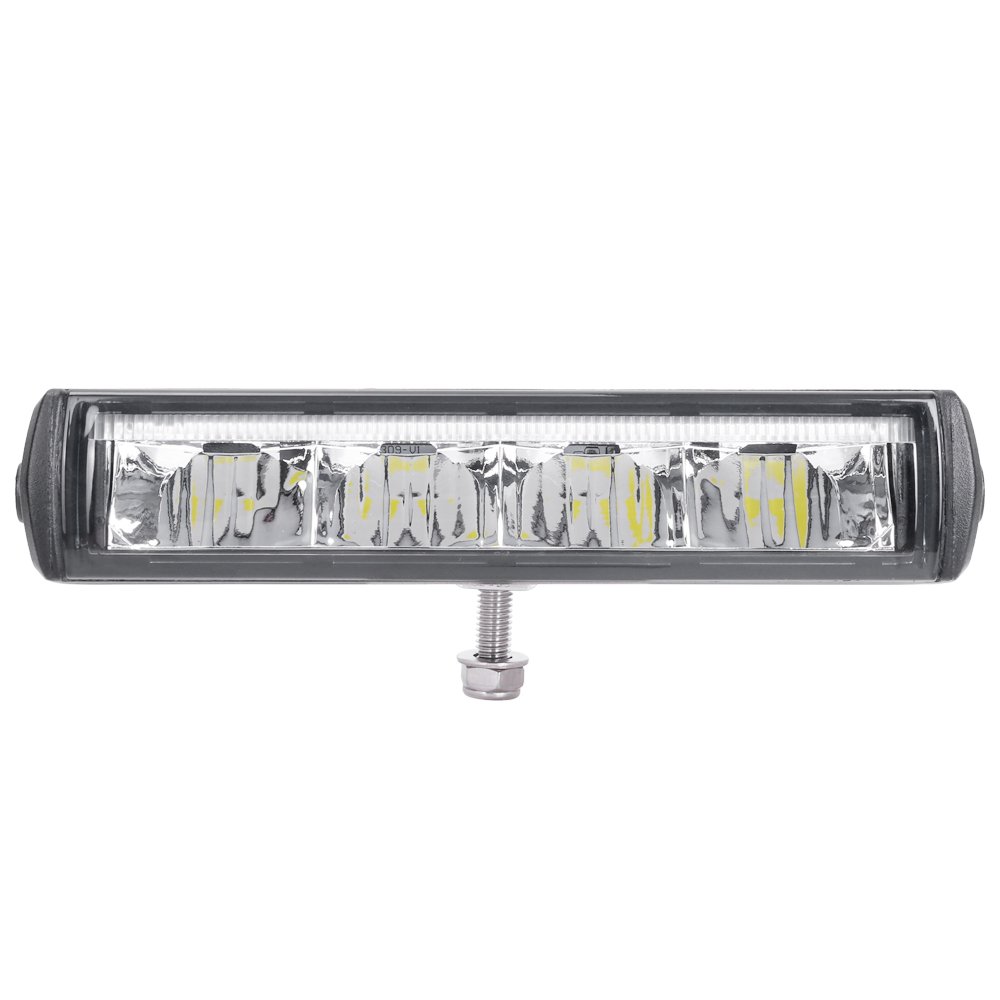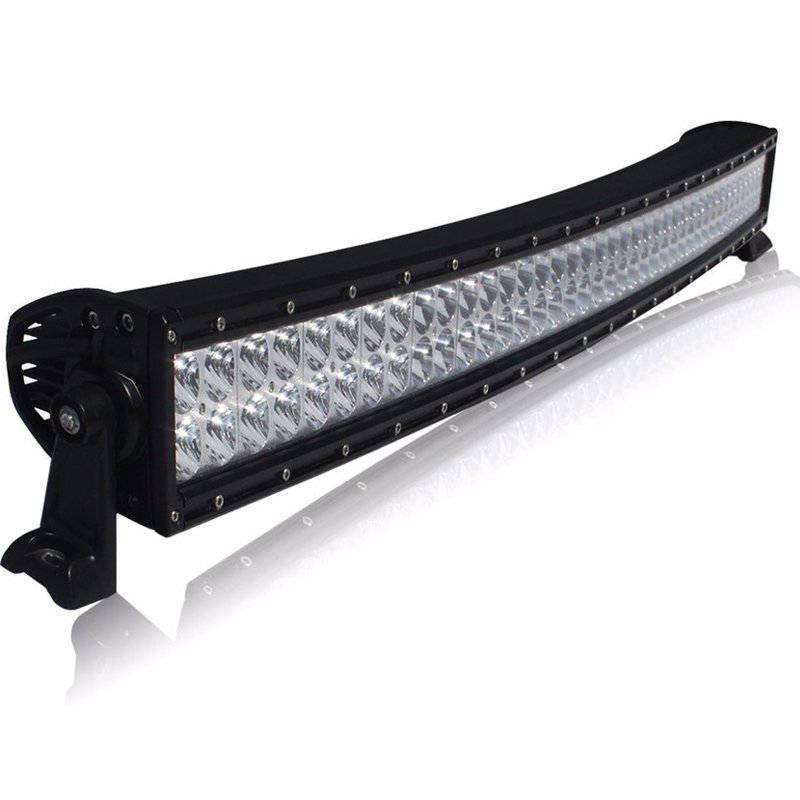Welcome to 360 Autotek LED Lighting Company, where we illuminate the path with various types of lighting. In this detailed post, we will explore the fascinating world of LED bar lights, discussing their applications, benefits, features, and more. Whether you’re a beginner seeking to enhance your knowledge or a seasoned enthusiast looking for insights, this guide aims to be your go-to resource. Without any further delay, let’s begin with our topic:

LED Light Bars:
LED bar lights are an efficient and multipurpose lighting solution that uses LEDs (LED stands for Light Emitting Diodes) in order to produce focused and bright light. These long light fixtures typically feature a series of closely spaced LED bulbs housed within a durable and weather-resistant casing. The mounting can vary depending on the size of the light. The most common mounts used are listed below:
1.Hard mount (best option in terms of stability)
2.Magnetic mount (allow magnetized connection of light to your vehicle)
An example of hard mounts are police LED bar lights. On the contrary, magnetic mounts are used in taxis and common vehicles that are used around. LED bar lights come in various sizes, shapes, and configurations, making them the best option for diverse applications, including off-road lighting, automotive lighting, home and commercial use, and marine lighting.
The concept of LEDs dates back to the early 20th century, but the practical application of LEDs in lighting saw significant advancements in the 1960s. However, it wasn’t until the late 1990s and early 2000s that LED technology matured enough for widespread use in various lighting applications, including LED bar lights. The continuous advancements in LED technology have led to increased efficiency, durability, and a broader spectrum of applications for LED bar lights.
LED bar lights have gained great popularity due to their several advantages (which are discussed in detail in the next section). They are known for their energy efficiency, longevity, and durability. LED technology allows for more focused and directional light output, making them ideal for applications where precision and intensity are crucial, such as off-road driving or outdoor activities.
Moreover, LED bar lights are environmentally friendly, as they contain no harmful substances like mercury and produce minimal heat during operation.
How do LED bar lights operate?
LEDs operate on the principle of electroluminescence, where a semiconductor material emits light when an electric current passes through it. In LED bar lights, individual LEDs are arranged in a linear pattern, and an electrical current is applied to them.
This results in the emission of light, producing a powerful and focused beam. LED bar lights are energy-efficient, as they convert a significant portion of electrical energy into visible light, minimizing heat generation compared to traditional lighting sources.

Parts of LED Bar Lights:
1.LED Chips: The light-emitting diodes are responsible for producing light.
2.Heat Sink: A component that dissipates heat generated by the light-emitting diode, ensuring longevity and optimal performance.
3.Housing: It is also referred to as a protective layer. The outer casing protects the internal components from environmental factors proving exceptional strength and heat dissipation. For example, Die-cast aluminum housing
4.Lens: A transparent cover that helps focus and shape the light beam. For example, Linear and TIR lens
5.Mounting Brackets: Components for securing the LED bar light to different surfaces. For example, aluminum alloy mount
6.Wiring and Connectors: Components for electrical connectivity and installation.
7.Power Supply: The source of electrical power that drives the LED bar light.
Understanding the mechanism, importance, and components of LED bar lights is important for making informed decisions when selecting and utilizing these efficient lighting solutions. Whether for automotive enhancements, off-road adventures, or various other applications, LED bar lights continue to light the way forward with their advanced technology and versatile design.
What are the pros of installing an LED light bar?
Installing LED light bars comes with a range of advantages, making them a popular choice for various applications. Here are some of the key pros of installing LED light bars:
- Energy Efficiency:
LED light bars are highly energy-efficient, converting a significant portion of electrical energy into visible light. This efficiency not only reduces energy consumption but also contributes to lower electricity bills.
- Longevity:
LEDs have a longer lifespan compared to traditional lighting technologies. LED light bars can last tens of thousands of hours, providing reliable and consistent illumination over an extended period. This longevity reduces the frequency of replacements and maintenance.
- Durability and Resilience:
LED light bars are designed to withstand harsh environmental conditions. They are resistant to vibrations, shocks, and temperature extremes, making them ideal for off-road vehicles, marine applications, and other challenging environments.
- Instant Illumination:
LEDs light up instantly without the warm-up time required by some other lighting technologies. This instantaneous illumination is especially valuable in applications where quick response times are essential, such as automotive and emergency lighting.
- Low Heat Emission:
Unlike traditional incandescent bulbs, LED light bars emit very little heat. This not only contributes to the safety of the fixtures but also makes them more suitable for use in confined spaces or areas where heat dissipation is a concern.
- Customizable Light Patterns:
Many LED light bars offer the flexibility to adjust the light pattern and intensity. This customization allows users to tailor the illumination according to specific needs, whether it’s a focused spotlight or a wider floodlight.
- Compact and Lightweight:
LED technology allows for compact and lightweight designs. LED light bars are often sleek and low-profile, making them easy to install and integrate into various settings without adding significant bulk or weight.
- Environmental Friendliness:
LED technology is environmentally friendly as it does not contain hazardous substances like mercury, commonly found in other lighting sources. Additionally, the energy efficiency of LEDs contributes to lower overall carbon emissions.
- Color Options:
LED light bars are available in various color options, allowing users to choose the most suitable color temperature for their specific application. This flexibility is beneficial for achieving the desired ambiance or visibility.
- Low Maintenance:
The durability and long lifespan of LED light bars result in lower maintenance costs over time. With fewer replacements and minimal upkeep, users can enjoy reliable lighting without the hassle of frequent maintenance tasks.

Applications of LED bar lights:
LED bar lights find versatile applications across various industries due to their efficiency, durability, and flexibility. Here are some common applications:
1.LED light bars are widely used on off-road vehicles such as trucks, jeeps, and ATVs for enhanced visibility during nighttime off-road adventures.
2.LED light bars are installed on truck beds to illuminate cargo areas, making loading and unloading tasks easier.
3.LED light bars are a crucial component of emergency vehicle lighting systems, providing high visibility to enhance safety during emergency responses.
4.LED light bars are used for navigation, spotlighting, and general illumination on boats and yachts, thanks to their durability and resistance to water exposure.
5.LED light bars are mounted on construction vehicles, excavators, and bulldozers to provide bright illumination at construction sites, enhancing safety and visibility.
6.Such light bars are utilized on agricultural equipment for effective illumination during early morning or late-night farm operations.
7.They are used for campsite lighting and recreational vehicles (RVs) to provide efficient and bright illumination in outdoor settings.
8.Last but not least, they are employed in industrial settings to illuminate large spaces efficiently, improving visibility and safety for workers.
9.LED light bars are used for security purposes to provide illumination around the perimeter of buildings, fences, and other secure areas.
10.They are installed under cabinets in kitchens and other areas for task lighting and ambiance. Also, LED light bars are used to highlight and showcase products in retail settings, enhancing visibility and aesthetics.
11.LED light bars are utilized for interior lighting in RVs, as well as for exterior lighting to enhance visibility around the vehicle.
12.LED light bars are used for accent lighting in gardens and landscapes to highlight architectural features, pathways, and plants.
13.LED light bars are employed in the entertainment industry for stage lighting due to their adjustable color temperatures and intensity.
These applications highlight the adaptability of LED bar lights across different industries and settings, where their energy efficiency, longevity, and customizable features make them a preferred lighting solution.
How can we install LED bar lights with magnetic mount and hard mount?
Installing LED bar lights with both magnetic and hard mounts involves a few steps to ensure secure attachment and proper functionality. Here’s a general guide for each mounting option:
Magnetic Mount Installation:
Materials Needed:
1.LED Light Bar with Magnetic Base
2.Clean, flat metal surface (preferably ferrous material)
3.Wiring harness with switch and relay (if not included with the LED bar)
Installation Steps:
1.Choose a clean, flat metal surface on your vehicle where the magnetic base can securely attach. Ensure the surface is ferrous (contains iron) for the magnetic base to adhere effectively.
2.Clean the chosen mounting area clean to remove any dirt, dust, or debris. A clean surface ensures better adhesion.
3.Place the LED light bar with the magnetic base onto the selected surface. The magnets should hold the light bar firmly in place. Adjust the position to achieve the desired angle of illumination.
4.Connect the wiring harness to the LED light bar, ensuring a proper electrical connection. Route the wiring neatly along the vehicle’s frame or interior, securing it with zip ties or clips.
5.Connect the wiring harness to the power source, typically the vehicle’s battery. Follow the manufacturer’s instructions for wiring connections. Use the switch on the wiring harness to control the LED light bar.
6.Turn on the LED light bar to verify proper functionality and alignment. Make any necessary adjustments to the angle or position.
Hard Mount Installation:
Materials Needed:
1.LED Light Bar
2.Mounting brackets and hardware (included with the LED bar or purchased separately)
3.Drill with appropriate drill bits
4.Screwdriver or wrench
5.Wiring harness with switch and relay (if not included with the LED bar)
Installation Steps:
1.Determine where on your vehicle you want to install the LED light bar. Ensure that the chosen locations are structurally sound and allow for proper beam alignment.
2.Secure the mounting brackets to the LED light bar using the provided hardware. Position the brackets according to the chosen mounting locations.
3.With the brackets attached, place the LED light bar in the desired location and mark the drilling points on the vehicle’s surface through the bracket holes.
4.Use a drill to create holes at the marked points. Use a drill bit size suitable for the mounting hardware.
5.Attach the LED light bar to the mounting brackets using the provided screws. Tighten the screws securely to ensure the light bar is stable.
6.Connect the wiring harness to the LED light bar, routing the wiring along the vehicle’s frame and securing it with zip ties or clips.
7.Connect the wiring harness to the power source, following the manufacturer’s instructions for wiring connections. Use the switch on the wiring harness to control the LED light bar. Following with testing the installation.

Maintenance tips for LED light bar:
To ensure optimal performance and longevity of your LED light bar, regular maintenance is crucial. Start by routinely inspecting the entire fixture for any signs of damage, corrosion, or loose components. Clean the lens to remove dirt, dust, or debris that may accumulate over time, as this can affect the light output.
Check the connectors and wiring for any damage or wear, and make sure they are securely connected. If your LED light bar is experiencing a heat sink, clean it to prevent the buildup of dirt and ensure efficient heat dissipation. Verify that the mounting brackets and hardware are tight and secure. Furthermore, inspect the power supply to ensure it is functioning correctly.
If your LED light bar is used in extreme conditions, such as off-road environments or marine applications, consider more cleanings and frequent checking. Overall, proactive and regular maintenance will not only extend the lifespan of your LED light bar but also contribute to reliable and consistent performance in different applications.
